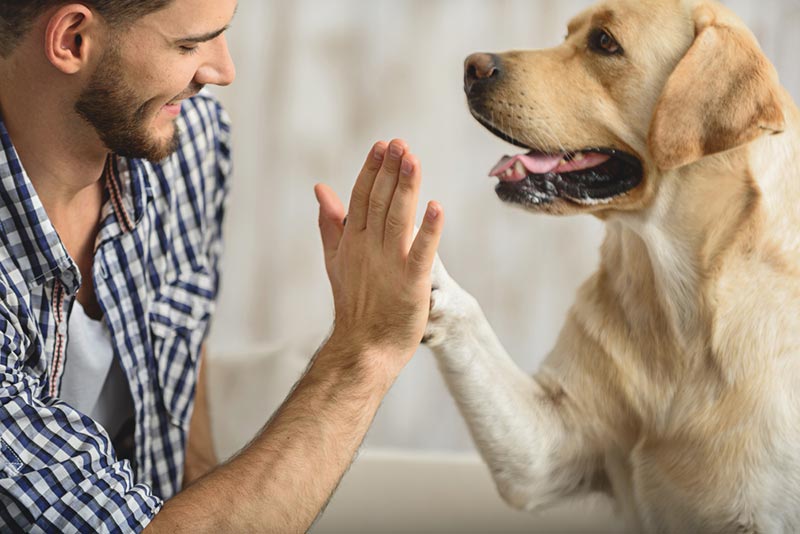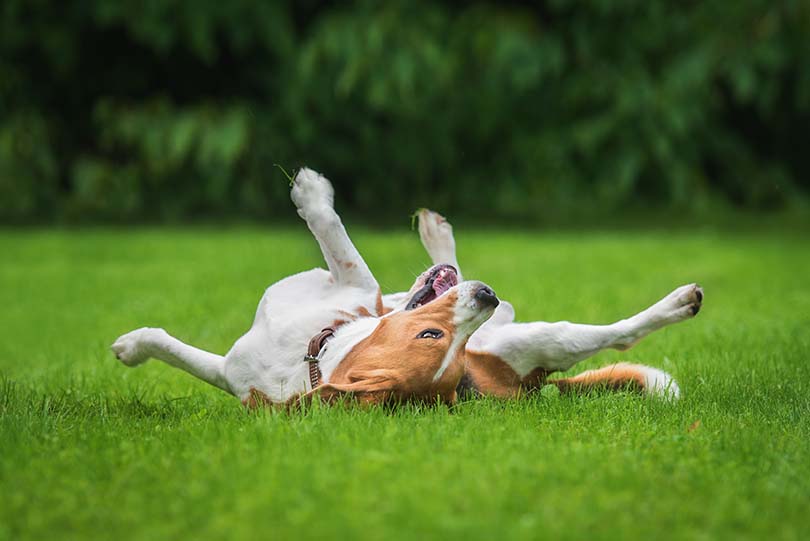VET APPROVED

The information is current and up-to-date in accordance with the latest veterinarian research.
Learn more »Whilst it is easier to train a puppy, it isn’t true that you can’t teach an old dog new tricks or encourage positive behavior from an adult dog. This is true when considering socializing a dog: socialization is very important because it prevents unwanted behavior from a dog when they are put in an unexpected or new situation, and it can help to ease the anxiety and stress that your dog encounters during these situations.
Below are 11 steps to help socialize an adult dog, including some common mistakes to avoid, to help you achieve the best results.

The 11 Tips to Socialize an Adult Dog
1. Be Patient
One of the biggest mistakes with dog socialization is trying to do too much, too soon. Don’t take your dog to the local dog park where it will be inundated with other pups. Start with a quiet route or even a deserted route where you can control the people and animals that you meet along the way. Start with short walks and introductions to one or two people or animals and only progress once your dog is comfortable in these situations. To begin, ensure the people and animals you see are at a safe distance, so you can first build your pup’s confidence, before progressing to a proper meet-up. You can even start in the safety of your own home, where your dog feels more comfortable, slowly getting used to people coming around.
2. Remain Calm
Your dog can sense your emotions and can tell how you feel. If you’re panicked and anxious, your dog will likely feel the same. If you come across as being calm and happy, your dog will feed off this positive energy. Be patient, don’t worry, and take things one step at a time.
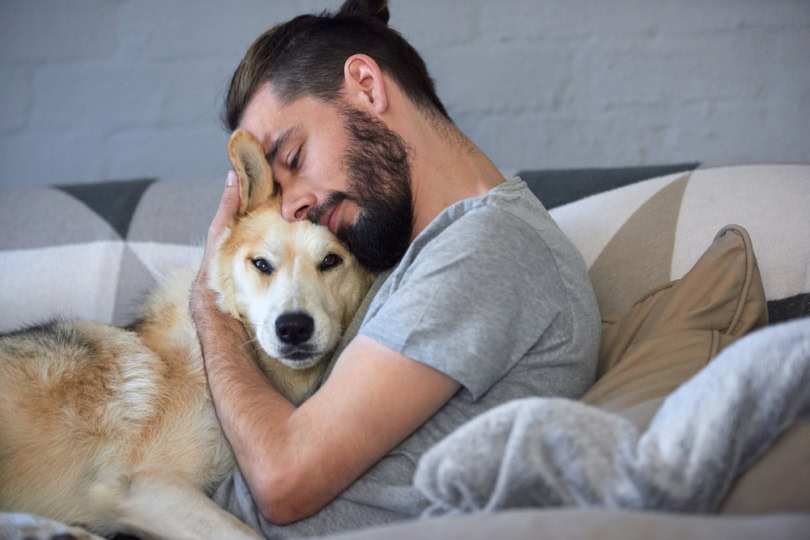
3. Use Positive Reinforcement
If your adult dog has not been socialized, it can lead to fear and anxiety. This can manifest as aggressive behavior, and while it is understandable that owners become equally anxious over this type of response, it is important not to punish or yell at your dog, as this will exacerbate the situation. You can say no, distract them, and get their attention back on you rather than whatever is going on around you. After they are back in focus and relaxed, praise and reward them for calm behavior.
Instead of focusing on telling them off when they exhibit undesirable behavior, use positive reinforcement as a training method. This way you will reward the desirable behavior you want them to exhibit and by repeating the process, teach them how to make good choices which will be consistently rewarded. Place your dog in situations where it’s easier to make such choices, with very few distractions that could cause them to make a mistake, especially at the beginning of the training.
4. Go for Regular Walks
Walks present some of the best opportunities for socialization. Depending on where you walk, you can come into contact with people of all ages, dogs of all ages and types, and new situations that your pup has yet to encounter. Doing so regularly will mean more introductions, and opportunities to socialize and your dog will get used to the types of situations they encounter. However, only embark on walks to meet other people and dogs after you are confident that you remain in your dog’s focus and that the positive reinforcement training is going well, meaning you can easily gain your dog’s attention and keep them calm during introductions. You don’t want to overwhelm your dog with too many new experiences too soon, which could cause them to take a step back in the training.
5. Bring Familiar Adult Dogs
Adult dogs tend to be calmer than puppies, although this obviously depends on the dog in question. Try to instigate a meeting and a walk with an adult dog, ideally one your dog is already familiar with and enjoys spending time with. If they are calm and composed, they can be used as a role model for your dog on how to behave when meeting unfamiliar dogs.
Be calm and allow your dog to approach only if they are relaxed and focused. If they are distressed, anxious, barking, growling, or lunging, then distract them and avoid interacting with the other dog. They need to learn that only through a calm approach they will get to socialize. If they are calm but curious, reward their behavior and let them approach the other dog with a relaxed but securely held leash. Leave some space between them. If everything goes smoothly and your dog remains calm, reward with a treat and walk the dogs together. Eventually, if things continue calmly, you can let them continue to interact with one another even more with their leashes on. However, if your dog is anxious or too excited, do not allow interaction, but first proceed to walking both dogs together at a safe distance, until the emotions settle down, before trying again.
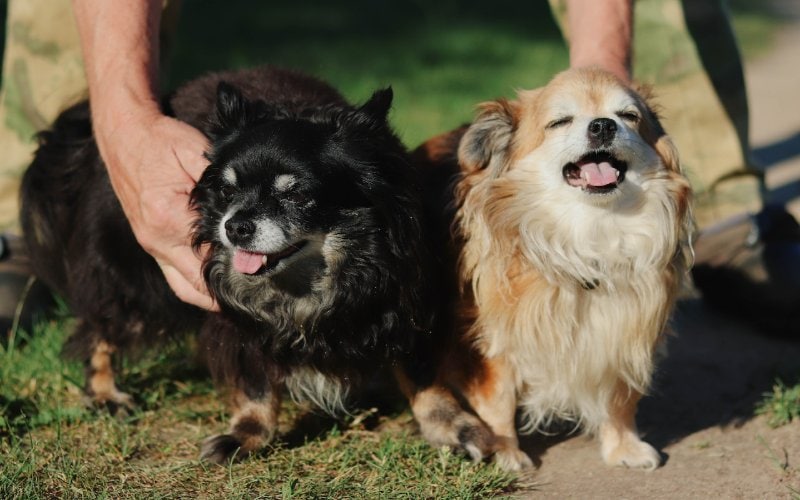
6. Meet Adult Humans
Similarly, adult humans are calmer and should have a better understanding of how to act and react around dogs. If your dog is nervous or anxious, invite a friend round to the house and ask them to ignore the dog when they arrive. If the dog remains calm, reward them with a treat. Let the dog approach the human and reward them for positive behavior, ignoring any unwanted behavior, but don’t push the introduction too far.
7. Meet Puppies and Children
Once your dog gets along with adult dogs and humans, you can consider introducing them to younger members of both species. Follow the same steps but be aware that children and puppies can be louder, more boisterous, unpredictable, and won’t necessarily act as respectfully around your dog. Always allow plenty of room between your dog and their new acquaintance and reward positive behavior. Keep your dog on a relaxed leash and ensure children are grown enough, calm, and understand how to behave around the dog.
Discourage the children trying to touch the dog, and let the dog choose how they want to proceed with interaction. Ensure the dog always has a safe place to withdraw to and that they never feel cornered, as this may lead to an aggressive outburst, which could be disastrous in the presence of children. Very importantly, if unsure of how your dog would behave around a child, or they have acted out in the past, it’s best not to attempt any interaction, and to seek professional and veterinary help.
8. Introduce Your Dog to New People And Situations
Whenever you enter a new location or a new situation, remember that this is another introduction for your dog. Certain events, places, people, or animals can trigger anxiety in dogs, so always pay attention to how your dog is acting to determine how they are feeling, and always follow the same rules of introduction.
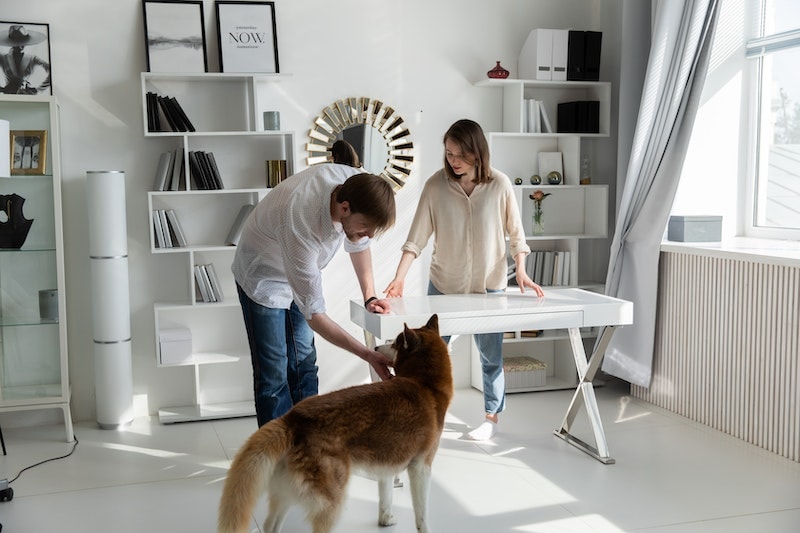
9. Think Twice Before Going to The Dog Park
The dog park may seem like a natural choice and a safe environment for your dog where they will come into contact with multiple dogs and owners. However, dog parks can also be an environment impossible to control, with dogs of various sizes, ages, temperaments, and recalls. It’s not a good choice for socializing anxious or fearful dogs, as it may lead to them feeling cornered, getting exposed to unpredictable and frightening situations, and being picked up by more dominant dogs.
However, you may try to stay outside the perimeter of the park. Let your dog get used to the other dogs being in the area, with them running around, barking, and playing, while not being able to come too close to interact, while remaining calm and getting them to focus on something else, like a toy or treats. Repeat this process many times so your dog is comfortable seeing and passing other dogs without showing much interest and remaining relaxed and composed.
10. Mix Up Your Routine
Some dogs are anxious about adults, some are specifically anxious around males. Some may even get anxious around people in uniform, cyclists, or around cars and other vehicles. This means that you need to gradually introduce your adult dog to all of these new people and situations. Change the route you walk and visit different parks and areas so that you can slowly introduce your canine companion to a host of different situations. But remember to do it very gradually and do not overwhelm them with new experiences, which can lead to fear and anxiety. Also, respect your dog’s boundaries, and if there is something they genuinely dislike or fear, avoid putting them in those situations.
11. Sign Up for Training Classes
Dog training classes, like dog parks, will obviously contain dogs and their owners. This means yet more opportunities to meet other dogs, and the trainer in charge of the class will be able to help with introductions and training methods to make the process go even more smoothly. Sign up, attend, and take things slowly. You can always stand at the back of the class and watch the first session as an introduction for you and your dog. Some particularly anxious dogs will benefit more from private classes, especially at the beginning of their training.
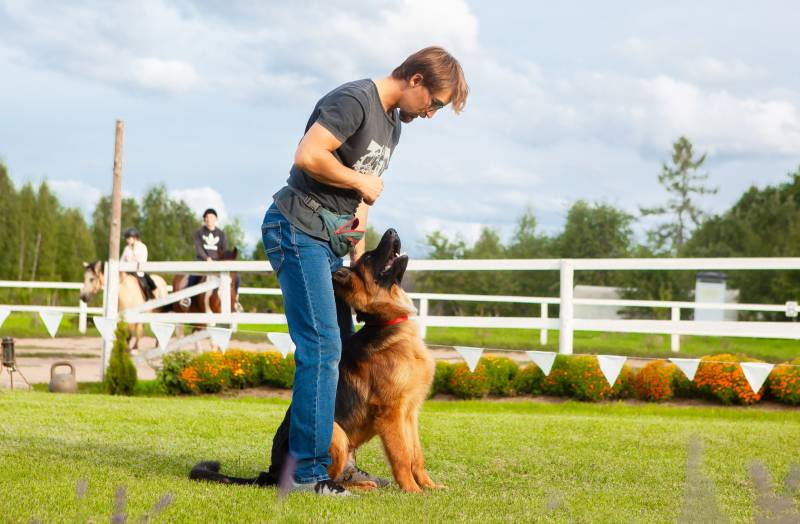

Final Thoughts
Socialization is an important element in the development of all dogs. Unfortunately, some puppies do not get the socialization they need, for one reason or another. This can result in the dog becoming anxious when meeting people, other dogs, and animals, or when put in new situations. It’s never too late to socialize an adult dog, but you should take things slowly.
Be calm, be consistent, and be prepared to reward positive behavior without shouting and reprimanding your dog for showing signs of fear or anxiety. Seek professional behaviorist help and sign up for training classes that focus on positive reinforcement.
Featured Image Credit: Olena Yakobchuk, Shutterstock
Contents
- The 11 Tips to Socialize an Adult Dog
- 1. Be Patient
- 2. Remain Calm
- 3. Use Positive Reinforcement
- 4. Go for Regular Walks
- 5. Bring Familiar Adult Dogs
- 6. Meet Adult Humans
- 7. Meet Puppies and Children
- 8. Introduce Your Dog to New People And Situations
- 9. Think Twice Before Going to The Dog Park
- 10. Mix Up Your Routine
- 11. Sign Up for Training Classes
- Final Thoughts
